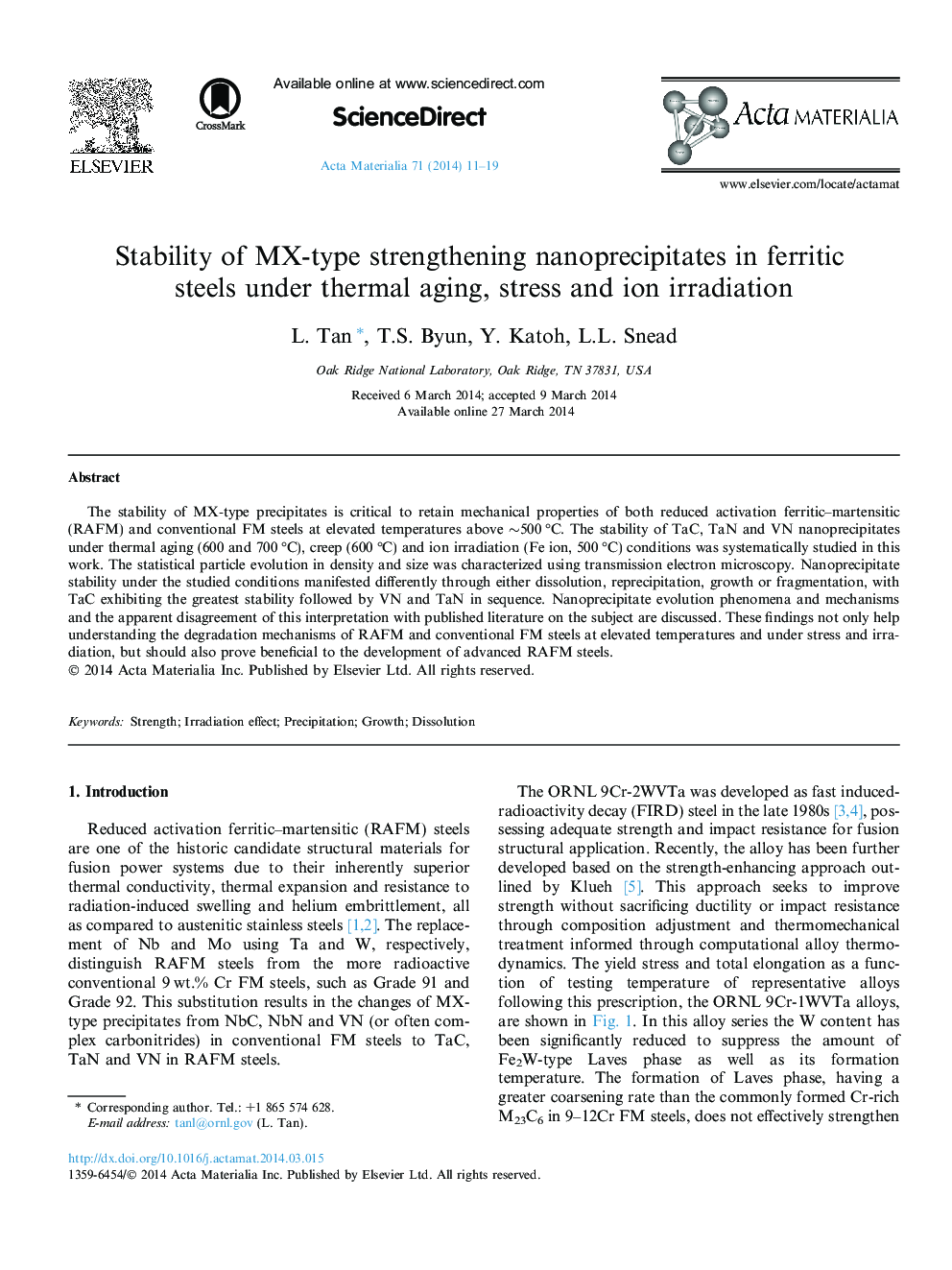| Article ID | Journal | Published Year | Pages | File Type |
|---|---|---|---|---|
| 1445682 | Acta Materialia | 2014 | 9 Pages |
The stability of MX-type precipitates is critical to retain mechanical properties of both reduced activation ferritic–martensitic (RAFM) and conventional FM steels at elevated temperatures above ∼500 °C. The stability of TaC, TaN and VN nanoprecipitates under thermal aging (600 and 700 °C), creep (600 °C) and ion irradiation (Fe ion, 500 °C) conditions was systematically studied in this work. The statistical particle evolution in density and size was characterized using transmission electron microscopy. Nanoprecipitate stability under the studied conditions manifested differently through either dissolution, reprecipitation, growth or fragmentation, with TaC exhibiting the greatest stability followed by VN and TaN in sequence. Nanoprecipitate evolution phenomena and mechanisms and the apparent disagreement of this interpretation with published literature on the subject are discussed. These findings not only help understanding the degradation mechanisms of RAFM and conventional FM steels at elevated temperatures and under stress and irradiation, but should also prove beneficial to the development of advanced RAFM steels.
